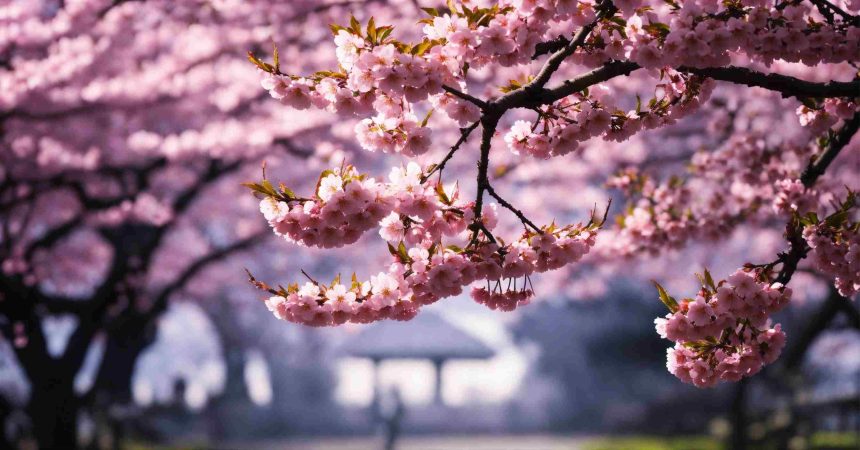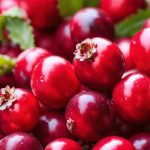The flowering crabapple tree (Malus) is one of the most beloved ornamental trees, prized for it’s graceful shape and spring blossoms. As a focal point in any landscape, crabapple trees inject color, wildlife habitat, edible fruit and fall features. Read on to learn all about growing, caring for and enjoying these stunning trees.
An Overview of Flowering Crabapple Trees
Flowering crabapples are small, deciduous trees that put on an awe-inspiring floral display in spring. Their blossoms emerge right before the leaves, completely cloaking the bare branches in a frothy mass of color. The blooms give way to equally decorative crabapples. Though edible, they are often left on the tree to feed birds and add visual interest. The vibrant fall color is another highlight.
There are over 800 cultivated varieties of crabapple, featuring blossoms in nearly every hue. The versatility and four-season appeal make them ideal accent trees for any size yard. They can also take the form of a weeping crab, with gracefully cascading branches or maintain a tidy, rounded shape.
Key Features and Benefits
Beyond the captivating flowers and fruit, crabapples offer numerous advantages:
- Compact Size: Most types reach 15-30 feet at maturity, maxing out around 40 feet. This makes them well-suited for small spaces. Certain dwarf cultivars top out under 10 feet.
- Multi-Season Interest: Crabapples provide ornamental value in spring, summer and fall—few other trees offer this duration of interest.
- Low Maintenance: Once established, these are unfussy trees that need little pruning or care. Some varieties are disease-resistant as well.
- Wildlife Support: Songbirds relish the high-protein fruit in fall and winter. Bees and butterflies visit the nectar-rich spring blooms.
- Edible Fruit: Though often too tart for fresh eating, many crabapples make delicious jelly, cider, wine and more.
- Shade: The airy, spreading canopy provides dappled shade in yards and patio areas during summer months.
Choosing a Cultivar
With hundreds of crabapples to pick from, it helps narrow options based on intended use in the landscape and growth habits. Consider bloom time, color, tree size, fruit features, disease resistance and architectural form when selecting.
Bloom Time: Crabapples flower over a long period, from mid-spring to early summer. Choosing early, mid and late-season varieties extends floral display. Specific cultivars also coordinate with bulbs and companion plants.
Flower Color: The saturated palette ranges from white and pink to coral, red, purple and bi-colored blooms. Consider flower power too—some kinds produce abundant blossoms while others bloom moderately.
Tree Size: Dimension is key—be sure the mature height and width suit the site. Check branching patterns as well for weeping or columnar forms. dwarf selections under 10 feet are ideal for containers.
Fruit Features: While most crabapples bear some type of fruit, ornamental selections focus on flower and foliage versus abundant fruit production. If making jelly, select cultivars touted for heavy fruiting. Also note size and persistent fruits.
Disease Resistance: Crabapples vary significantly in their susceptibility to diseases like apple scab, fire blight, rust and mildew. In rainy regions, choose resistant, low-maintenance varieties.
Form: Beyond rounded crowns, options include horizontal branching, columnar, pyramidal, oval, weeping and more. This influences overall shape.
Planting and Care
When sited properly and cared for correctly, crabapple trees thrive for decades with minimal upkeep. Use these guidelines for optimum growth.
Sun Exposure & Soil
Flowering crabapples require full sun—at least 6 hours of direct light daily. Well-drained, fertile soil amended with compost gives them the best start. Though adaptable, they prefer evenly moist, slightly acidic conditions.
Planting
Select a spot with adequate air flow and space for growth. Dig a hole twice as wide as the root ball with a mound at the bottom to stabilize it. Set the tree atop the mound with the first major roots 1-2 inches below grade. Backfill with native soil, water thoroughly and add mulch. Avoid amendments. Spring or fall ensure the best establishment.
Watering
Young trees need an inch of water per week from rain and irrigation combined. Monitor soil moisture and water slowly, deeply when the top few inches become dry. Mature, established crabapples are quite drought tolerant once their root system develops.
Fertilizer
While crabapples growing in enriched garden soil likely don’t need extra nutrients, trees in poor or sandy conditions benefit from light feedings. Use a balanced organic fertilizer or low-nitrogen formula in early spring.
Pruning
Aside from removing crossing branches, suckers and damage, crabapples need minimal pruning. Only trim if absolutely necessary to maintain structure, access pathways or height. Never shear the top—this encourages weak growth prone to breakage.
Pests & Diseases
Select resistant varieties to avoid issues. For vulnerable trees, prompt removal of infected plant debris improves health. Contact a tree care company if fungus, borers or other problems require treatment.
Design Uses in the Landscape
Beyond a specimen tree shining solo, flowering crabapples lend themselves to nearly endless landscape applications. Read on for design inspiration.
| Accent Tree | The compact size makes crabapples ideal accent trees integrated throughout the landscape. Dot them along property lines or position one by the front walkway or patio for a burst of seasonal interest. |
| Privacy & Property Screens | Massed in a hedge row, crabapples create airy, ornamental screens with bonus spring privacy as they leaf out. Use them to delineate garden rooms too. |
| Shade Trees | While they don’t cast dense shade like oak trees, crabapples give filtered afternoon shade perfect for sitting areas. Plant near a back patio or deck. |
| Pollinator Gardens | For maximum pollinator appeal, select crabapples with abundant, nectar-rich blossoms. Feature them prominently in wildlife gardens. |
| Edible Landscapes | If enjoying the fruit, incorporate ornamental yet productive crabapple trees into edible garden designs. They’re beautiful while also bearing a tasty harvest. |
| Street Trees | Thanks to their small stature, flowering crabapples work well as residential street trees, lining neighborhood byways without impinging on traffic or overhead lines. |
| Urban & Courtyard Trees | Where space is tight, compact and dwarf crabapples shine. The right cultivar allows even small courtyard gardens or urban lots to support trees. |
Favorite Flowering Crabapple Varieties
With hundreds of superb options, these remain garden-industry standouts for their stellar performance across regions.
- Adirondack: One of the hardiest flowering crabapples, this medium-sized tree withstands cold winters and resists disease. Rosy buds open to bright white blooms covering weeping branches. Yellow fall color and abundant small red fruits follow.
- Bob White: A rounded small tree ideal for postage stamp yards, ‘Bob White’ gives profuse white spring blossoms that fade to soft pink. Blue fruits, orange-red autumn color and disease resistance add to appeal.
- Centurion: Upright and almost columnar in form, making it a spatial saver, ‘Centurion’ blooms late spring with deep pink flowers and minimal fruit. The red-orange fall foliage is another plus. It’s quite disease resistant as well.
- Prairifire: One of the most popular, ‘Prairifire’ dazzles with profuse fuchsia-red blossoms on a shapely rounded frame, glossy leaves and abundant deep red fruits. Fantastic foliage and flower power.
- Molten Lava: How can you resist a name like this? The fiery orange-red buds deliver on it, opening to peach-colored blooms. Compact size and bold branch structure give it year-round magnetism.
- Sargent Tina: For small spaces, it’s hard to top dwarf Sargent crabapples like ‘Tina’. At just 6-8 feet tall, it explodes with masses of bright pink blooms in spring followed by tiny yellow crabapples beloved by birds.
- Spring Snow: A flowering crabapple with one of the longest bloom times, ‘Spring Snow’ starts the floral show in late April, with abundant creamy blossoms fading gently to white in May. Disease resistance adds to it’s landscape value.
- Sugar Tyme: Another heavy flowering and fruiting selection, ‘Sugar Tyme’ gives profuse fragrant white blossoms in late spring, good fall color and large sweet yellow-green fruits excellent for eating fresh or cooking.
Enjoying Flowering Crabapples
Beyond appreciating their stellar ornamental qualities outside, crabapples can be harvested for an array of delectable treats. The sky’s the limit when putting this fruit to work in your kitchen. Here are a few ideas for savoring crabapples:
Crabapple Jelly: Hands down one of the most popular recipes, crabapple jelly captures the brilliant hue and tart flavor of the fruit. Use it to fill thumbprint cookies or serve alongside meat dishes. Don’t skimp on the sugar or pectin to help it set.
Spiced Crabapple Chutney: For an Indian-inspired chutney, simmer chopped crabapples with typical flavor friends like ginger, raisins, onion, garlic, vinegar, brown sugar and warming spices like cayenne, cumin, coriander and mustard seeds. Spoon it over pork or ham.
Crabapple Cider: Harkening back to old-fashioned cider making traditions, chopped crabapples lend their balanced sweet-tart depth to fresh pressed apple cider. Add whole cloves, cinnamon sticks and fresh ginger for extra flair.
Crabapple Wine: Ferment chopped crabapples with white grape juice, sugar, acid blend and wine or champagne yeast for a crisp crabapple wine with grapefruit notes. Allow 6-8 weeks for proper fermentation and aging.
Frothy Crabapple Cocktails: The natural pectin gives crabapple puree wonderfully frothy texture. Take advantage by making gorgeous holiday cocktails with crabapple puree, sparkling wine, vodka or gin and festive garnishes.
FAQs
With proper care and siting, flowering crabapple trees enjoy relatively long lifespans, averaging between 20-30 years. Some varieties can thrive over 50 years. Their longevity makes them valued landscape investments.
Growth rate depends on both the variety and growing conditions. On average, established crabapples grow around 1-2 feet per year once their root system establishes during the first few seasons. Some quick-growing kinds can achieve closer to 3 feet annually.
While technically all crabapples bear some kind of fruit, many popular ornamental cultivars are bred specifically for prolific flowers rather than fruit production. If enjoying edible fruit is important, choose a variety described as a heavy fruiter.
Generally they are not terribly messy, especially compared tofruit trees. Some drop minute crabapples in fall but most cultivars do not create significant litter if the small fruits are left to feed birds. Any fallen blossoms in spring make beautiful groundcover at their feet!
Yes, crabapples are self-fertile so only one variety is needed to produce the pollen necessary for fruit production. Planting different cultivars close together maximizes fruiting and cross-pollinates nearby apple trees too.
Flowering Crabapples: A Tree for All Seasons
In every sense, flowering crabapples represent the pinnacle of ornamental trees with their breathtaking floral display, graceful architecture, fall color, decorative fruit, petite proportions and culinary versatility. It’s no wonder they’re prized additions to gardens across every region. For beauty through three seasons of interest, high wildlife value and easy-going care, look no further than Malus for landscape stardom.
So if you have space to plant a small focal tree, consider the flowering crabapple—you certainly won’t regret it! Their elegance and vibrancy elevates any outdoor space.




